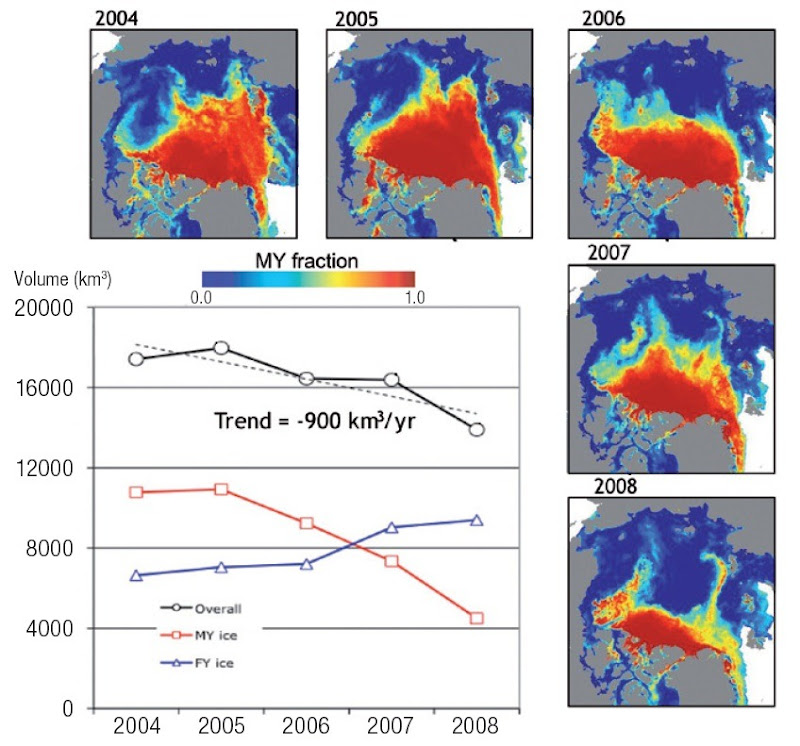Graph of the Day: Trend in Winter Multi-year and First-year Sea-ice Fractions, 2004-2008
Satellite measurements of winter multi-year ice cover in the Arctic Ocean between 2004 and 2008, along with the corresponding downward trend in overall winter sea-ice volume, and switch in dominant ice type from multi-year ice to first-year ice. During the last few decades of the 20th century, the positive phase of the Northern Annular Mode (NAM)—an encompassing category that includes Arctic Oscillation and North Atlantic Oscillation states—produced conditions that strengthened Arctic Ocean winds transporting ice away from the Alaskan and Siberian coasts via the Transpolar Drift and flushing large amounts out of the Arctic Basin through the Fram Strait and into the North Atlantic (Serreze et al. 2007). The Transpolar Drift seemed to veer powerfully over the Pole and pick up more ice off the northern edge of the Beaufort Gyre for years, exporting multi-year ice before it could return to the Canada Basin and Beaufort Sea for another annual accumulation of additional ice. By the beginning of the 21st century, the NAM had returned to a more neutral state and multiyear ice accumulated again in the Arctic Basin. However in 2007, positive NAM conditions prevailed over the summer and once again multi-year ice continued to drain from the Arctic Basin (Maslanik et al. 2007, Serreze et al. 2007, Kwok et al. 2009, NSIDC 2009a). Based on sea-ice age data from researchers at the University of Colorado, during the winter of 2008/2009, 390,000 square kilometres of second-year ice and 190,000 square kilometres of older (more than two years old) ice moved out of the Arctic (NSIDC 2009a). … Before the 2007 summer, most models for seasonal ice loss envisioned an ice-free September for the Arctic Ocean in the waning years of the 21st century (Serreze et al. 2006, Boé et al. 2009). The plummeting sea ice extent of 2007 demanded new analyses and suggested new trends. Researchers who track the growth and melt of polar ice found the longterm outlook ‘disturbing’, particularly because all the models used for the IPCC AR4 underestimated the timing of Arctic ice loss (Stroeve et al. 2007, Stroeve et al. 2008). They suggest this may be due to an assumption of sea-ice thickness in the models greater than existed in reality (Stroeve et al. 2008). A reconsideration of the trends led to speculation that the Arctic Ocean may be ice-free in September by 2030.
